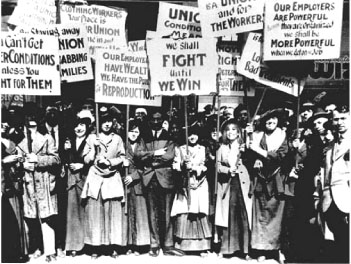Sunday, January 27, 2013
Effective Tax Brackets
So you think that the latest compromise over the fiscal cliff has increased the tax rate on the rich while it kept the rate unchanged for the rest? Well, think again. The following is the latest estimate by the Tax Institute of the expected effect of the new legislation once everything is taken into consideration. The effective tax rates are expected to look as such:
A greater breakdown of the calculations would reveal what many are not aware of:
65% of the Federal Income Taxes are paid by the top 20% of the tax payers while the bottom 20% pay only 2.4% of the Federal Income Taxes. Is such an inequality in income distribution sustainable?
Bottom fifth: 1.9
Second fifth: 9.5
Middle fifth: 15.6
Fourth fifth: 19.0
Top fifth: 28.1
80-90 percentile: 21.5
90-95 percentile: 23.4
95-99 percentile: 26.3
Top 1 percent: 36.9
Top 0.1 percent: 39.6
Wednesday, January 23, 2013
Are Labour Unions Effective?
At the dawn of the 20th century, heavy industry and big business
Who Do Unions Benefit?Of course, labor unions were created for the benefit of their members. The union represents the workers to the employers and negotiates on their behalf to secure better wages and working conditions. Unions also run the largest non-military job training
Economic studies have also suggested, however, that much of the
difference in pay and benefits that many union workers enjoy compared to
non-union employees can no longer be attributed to the unions
themselves. Modern union contracts make it more difficult for a company
to fire an unproductive employee, so employers now tend to be much more
selective in whom they hire, which has resulted in an increase in the
quality of the union workforce as a whole. Many unions form for
employers and industries that are larger and more stable financially
because this allows the union to demand better wages and benefits.
Economic ImpactUnions can convince workers to join them as a means of preserving the unions' clout in industries (such as the U.S. auto industry). But history shows that this can cripple an industry, especially over time. Members of the UAW enjoy wages of about $70 an hour, a wage greater than that of many Ph.D. scientists. They also enjoy a whopping seven weeks of vacation per year for unskilled laborers. Foreign automakers came to the U.S. auto market in the 1970s and used non-union workers in the southern states to build vehicles. Due to the savings in labor costs, these foreign automakers could afford to sell their vehicles for less money. This made it much harder for the big three automakers to produce competitive cars at affordable prices for the public, and in 2008 Chrysler and GM were forced to declare bankruptcy.
CorruptionJimmy Hoffa gave millions of dollars of union pension money to the Las Vegas mob in the '60s and '70s, and elements of organized crime can muscle into local labor unions and take jobs and other benefits from working members. Some unions are not above using strongarm tactics to protect their territories, as the International Longshore and Warehouse Union proved in September of 2010 when it attacked a railroad dock terminal, overpowered security
The Bottom LineRegardless of their effectiveness, labor unions have played a major role in workers' rights
and the economies of America and other capitalist countries. Although
some economists say that unions have outlived their usefulness, they
will likely continue to impact our industries and other sectors of the
economy one way or another for decades to come.
Subscribe to:
Comments (Atom)

